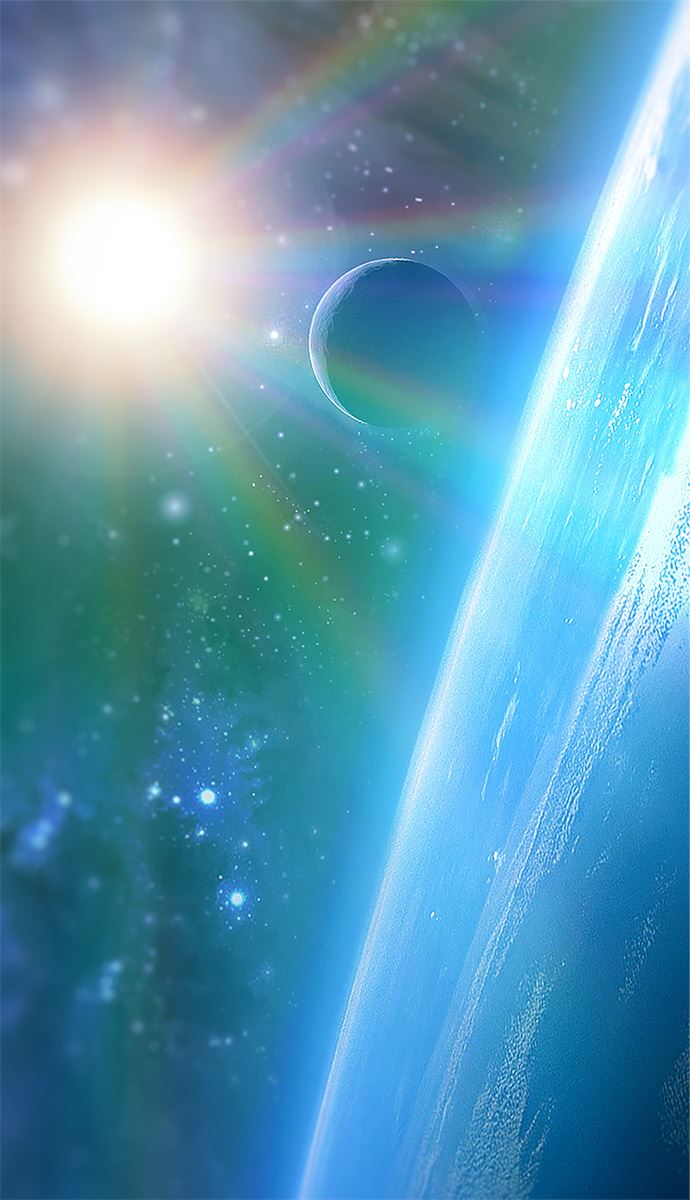...What we see in the sky at night? |
| Practically all of the starry realms visible to the naked eye on Urantia belong to the seventh section of the grand universe, the superuniverse of Orvonton. The vast Milky Way starry system represents the central nucleus of Orvonton, being largely beyond the borders of your local universe. This great aggregation of suns, dark islands of space, double stars, globular clusters, star clouds, spiral and other nebulae, together with myriads of individual planets, forms a watch-like, elongated-circular grouping of about one seventh of the inhabited evolutionary universes. Read more...TWO COSMOLOGIES - ASTRONOMY AND THE URANTIA BOOK Cosmology is that part of astronomy that deals with the history and large-scale structure of the universe. The Urantia Book deals with the same subjects. In 1955 when The Urantia Book was published, the two cosmologies seriously disagreed. The Urantia Book discusses the center of the entire universe. The center has most of the mass (stuff) in the universe, and is therefore the gravity center of the universe. It is called Paradise and it does not exist in space or time, but the rest of the universe can locate itself with respect to it. The universe center is encircled by a central universe which has seven, coaxial planar rings of inhabited worlds. Beyond this is an elliptical planar ring of seven enormous superuniverses. This entire structure is mostly in a plane, where two dimensions are larger than the third. These seven superuniverses are the part of the Universe that is inhabited by humans. Our superuniverse, Orvonton, is the youngest, and has ten major sectors and 1,000 minor sectors; our Milky Way galaxy is one of these minor sectors. Our local universe, Nebadon, is one of 100 local universes in the disk of the Milky Way galaxy. Our world, Urantia, is one of almost four million inhabited worlds in the local universe. Read more of the above article by going to this link and finding the article on page 9 of the Fellowship Herald. Physical Cosmography
This physical cosmography roughly parallels what is known or hypothesized by contemporary astronomy. Orvonton, the seventh superuniverse, for instance, is identified with the Milky Way galaxy and most of its major divisions have been identified by our astronomers.[15:2.10] The authors report that universe space expands and contracts in two billion year cycles. [11:5.9] They make many comments which relate to present day astronomical concepts and data.The authors, however, caution us that because of restrictions placed on revelatory activity, the science and cosmology of The Urantia Book are not inspired. While spiritual insight is a revelatory gift, human knowledge and wisdom must evolve. Very soon, they tell us, the science of The Urantia Book will be out grown.[101:4.2] The Urantia Book's physical cosmology represents the best of human knowledge at the time of its compilation in the mid 1930s. Spiritual Cosmology Postmortal morontial (part material, part spiritual) and spiritual activities and training take place on architectural spheres. These specially constructed headquarters worlds and their satellites are distributed throughout the grand universe paralleling the geographic and hierarchical cosmography of the material creations; systems, constellations, local universe headquarters, minor sectors, major sectors, superuniverse headquarters, the one billion spheres of the central universe, and the Isle of Paradise. Presiding over each of these ascending spheres is a hierarchy of spiritual administrative personalities. At each level the spiritual activities and training become progressively higher.
"Every impulse of every electron, thought, or spirit is an acting unit in the whole universe...The universe is whole; no thing or being exists or lives in isolation." What we see in the sky at night? The first human beings and where they came from? The importance of the experience of raising children? What truth is and why it is so hard to find these days? What good and evil are, really? What a soul is and whether I have one? What we can do on this planet to eliminate wars? |


